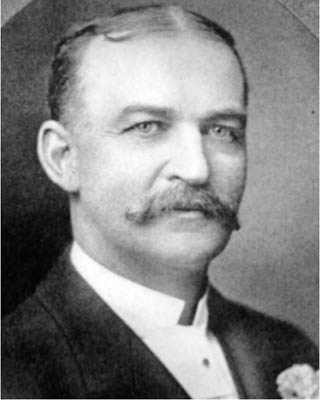Listen to this article
We are continuing our series introducing Colorado’s governors with James H. Peabody, Colorado’s 13th (and, briefly, 15th) governor. He served one full term two-year term from 1903-1905, and for a few hours on March 16, 1905.
As part of the State Publications Library’s effort to digitize governor’s addresses, Peabody’s inaugural address and biennial address are available online. Documentation from the General Assembly’s 1905 investigation of Peabody’s contested election with Alva Adams are also available in our digital repository.

Early life
James Peabody was born on August 21, 1852 in Vermont. He grew up on his family’s farm as the youngest of 17 children. He followed his father to Pueblo, CO in 1872 to keep the books for their dry goods firm. After a few years, he began working for James Clelland’s general store in Cañon City. This was a fortuitous career move, because he was able to both work his way up to partner in the firm and meet his wife, Frances Clelland. They were married in 1878 and had four children.
Peabody began his political career when he was elected county clerk for Fremont County in 1885, defeating a longtime incumbent who held the position for the previous 18 years. While county clerk, he helped organize the First National Bank of Cañon City, eventually serving as the bank’s president. He also helped organize and lead both the Cañon City Water Works Company and the Electric Light Company of Cañon City.
Serving as Governor
Peabody was well-known throughout Colorado when the Republican Party nominated him for governor. He focused his campaign on quelling labor issues in Colorado’s mines and was elected in 1903.
Conflicts between mine owners and labor unions largely defined Peabody’s term. When Peabody was elected, mine owners felt that they had an ally in Peabody because of his past work as a banker and business owner. This emboldened them to escalate their efforts to undermine the miner’s unions by employing nonunion workers and denying collective bargaining agreements. When the union workers retaliated by going on strike and blocking roads and railways, mine owners asked Peabody to send in the Colorado National Guard. While previous governors tried to use restraint in these situations, Peabody did not hesitate to send out the militia.
One particularly violent situation occurred during a strike at the Cripple Creek gold mine in Teller County. Peabody sent 1,000 members of the Colorado National Guard after strikers blocked roads and railways leading into the mine. The militia took over the town’s police force and the town’s union-friendly newspaper, the Victor Record, and arrested dozens of strikers without cause. The conflict escalated to the point that a striking miner dynamited the railroad station in Independence, killing 13 non-union workers.
For more information about this conflict, see “The Power and Authority of the Governor and Militia in Domestic Disturbances,” a legal brief reviewing Peabody’s decision to deploy the Colorado National Guard during labor conflicts.
Election Controversy
Peabody ran for re-election in 1904 against Democrat Alva Adams, who had served as governor twice before. Democrats criticized Peabody’s aggressive handling of the miners’ strikes and used the slogan, “Anybody but Peabody!” Fraud and corruption were widespread throughout the election – Republican mine owners threatened to fire their workers if they voted for Adams, and Democrats cast repeat votes using fake names and disguises. Adams won the election and was sworn in on January 10, 1905. However, Peabody contested his win and a legislative committee was created to investigate the election.
The Republican-led General Assembly heard testimony from over 2,000 people during their investigation of the election. SPL has digitized transcripts from this testimony that can be viewed in our digital repository. The legislature voted to unseat Adams and pronounce Peabody the winner of the 1904 election, but only under the condition that he resign within 24 hours of being sworn in. Peabody agreed, and Lieutenant Governor Jesse F. McDonald ultimately served as governor for the 1905-1907 term. Colorado now has the distinction of having three different governors in one day.
Life after politics
Peabody returned to Cañon City after his resignation and retired from public service, preferring to focus on his businesses. He died in 1917 and is buried in Cañon City.
- Digital Repository Top 5: the most popular newly digitized materials of 2024 - December 30, 2024
- Colorado’s Scenic and Historic Byways: Gold Belt - December 6, 2024
- Finding affordable health insurance through Connect for Health Colorado - November 22, 2024